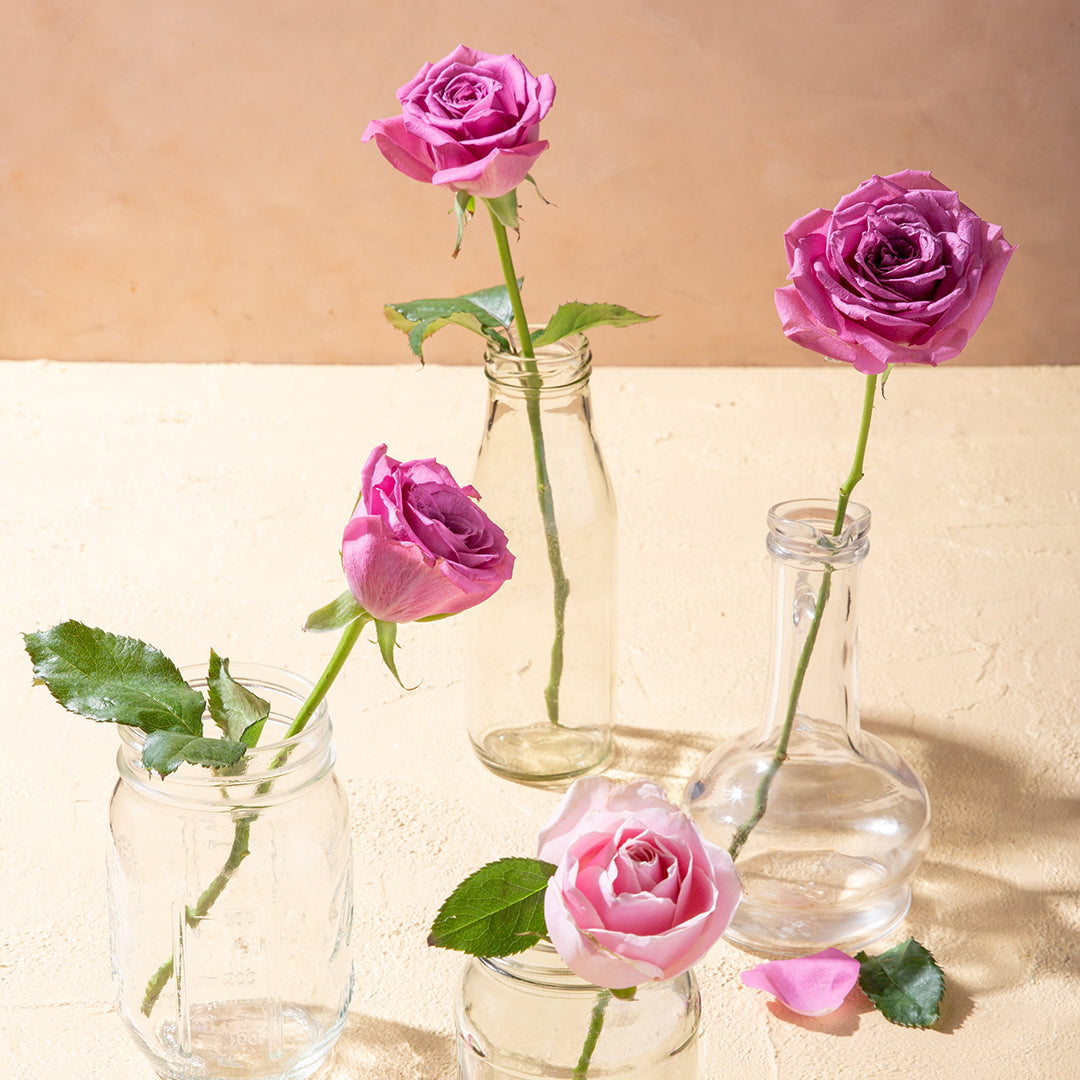
What do the different colors of roses mean?
1. Red roses are often considered the universal symbol of love. In most places around the world, everyone knows that receiving red roses—whether it’s one or a dozen—is how you say “I love you.” This rose colour meaning conveys deep affection, such as desire or longing for your significant other.
2. Pink roses symbolize gratitude, grace, and joy. Overall, pink roses suggest a gentleness compared to the typical bright red rose. They are seen as a token of admiration when given to someone. Just like with red roses, pink’s varying shades all have different rose colour meanings. A dark pink is a way of saying thank you for showing your appreciation, whereas a pale pink indicates gentleness, especially when given for more sympathetic occasions.
3. White has always been a symbol of purity, innocence and in some cases, chastity, and for roses, it is no exception. For that reason, white roses are often given at weddings and other ceremonial occasions like christenings and graduations.
4. Though purple roses are not nearly as common, they indicate a fascination or adoration. Purple roses are often associated with royalty and splendor and were often given to queens and kings. As a result, deep purple roses are great flowers to send for a happy occasion or celebration that make the receiver feel particularly special. Lavender roses, by contrast, mean “love at first sight.” Like it is dark purple counterpart, this sentiment is coupled with a sense of enchantment.
5. Yellow roses are a symbol of friendship and caring. Never send yellow roses to someone you are romantically interested in, as this suggests you would prefer to stay in the friend zone. In fact, yellow roses are one of the only roses that have no romantic meaning behind them.
6. Orange roses indicate enthusiasm and passion, making them a creative substitute for Valentine’s day roses and other holidays when people typically buy red roses. Sending orange roses conveys romance, but not nearly as much as a bouquet of red roses might.
Frequently Searched Terms on Google
what do the different colors of roses symbolize, colourful Rose bouquet for wedding, colourful rose flower bouquet


